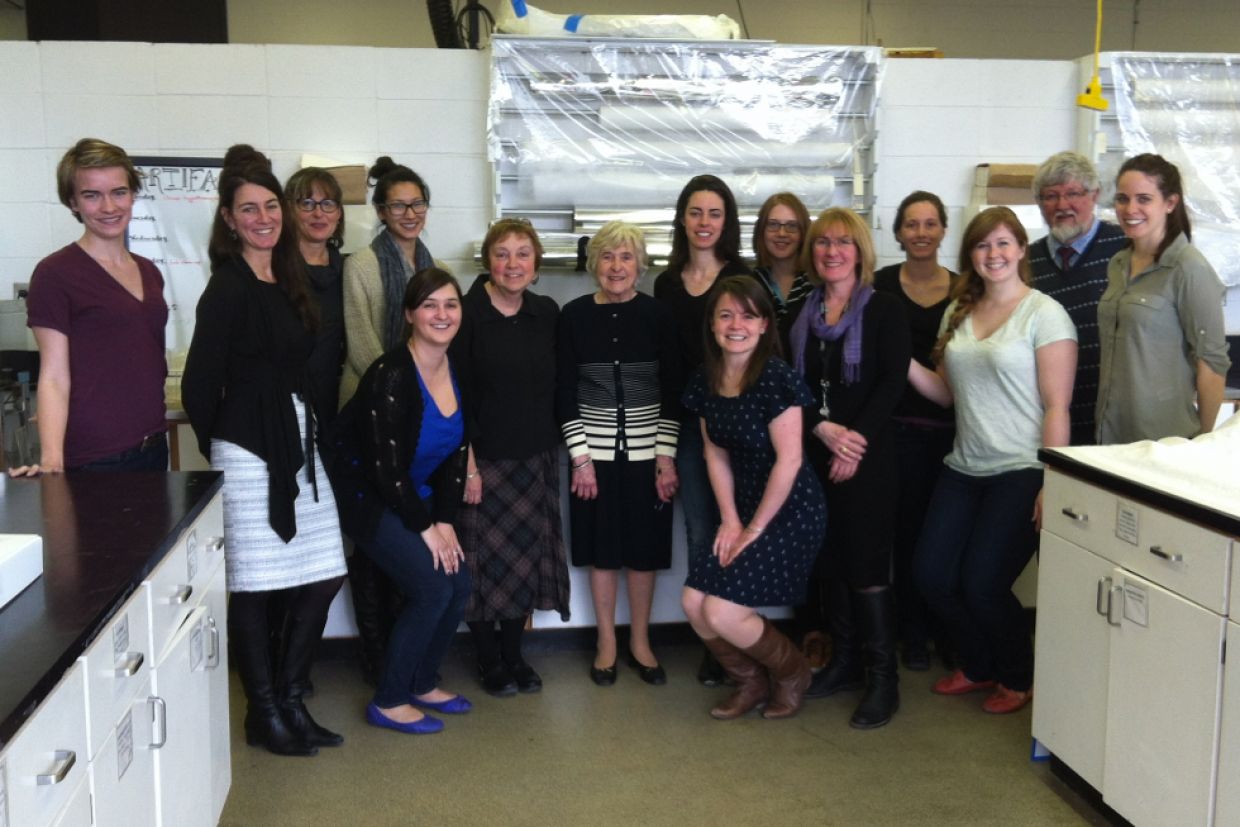The Queen’s community is remembering alumna Margaret Light, BA'47, as a passionate arts supporter who helped the next generation of Queen’s-trained art conservationists better preserve and restore textiles, paintings, and sculptures.
Light passed away peacefully at home at the age of 95 on Aug. 12.
“Margaret Light was a proud Queen’s supporter who, through her boundless energy and dedication, inspired our faculty and students,” says Norman Vorano, head of the Department of Art History and Art Conservation at Queen’s. “She felt very passionately about the need to preserve important cultural and artistic objects so that future generations may continue to have transformative experiences with art. Her generosity has touched so many of our students.”
Light – the widow of Walter Light, former Queen’s Board of Trustees chair and namesake of Walter Light Hall – had an abiding passion for textiles and textile art.
She was very involved in the Museum of Textiles in Toronto, collected an array of carpets and rugs, and owned her own weaving looms. She was a dedicated supporter of an art form that has finally gained wider acceptance in the world of high art, which has traditionally been the domain of paintings and sculpture and less accepting of the complex artistic merits of textiles.
Light’s own interest has focused on the Art Conservation program at Queen’s.
Light donated nearly $1.8 million to Queen’s, $1 million of which went to establish the Margaret A. Light Fellowship in Art Conservation, which brings in leading conservators from around the world to offer their insights to the school. The fellowship also supports teaching and research activities in the Art Conservation program, including, in addition to teaching fellows, visiting scholars, guest lecturers, workshops, equipment for teaching and research, faculty research, and sabbatical replacements.
“I think it is absolutely essential that we preserve and care for our country’s important artifacts,” Light said in a 2014 interview. “This was reinforced to me when I was fortunate, on my travels, to visit the conservation labs in York, England, and Florence, Italy. I knew of Queen’s (Master of Art Conservation) degree and was proud of their achievements, so it was an easy decision to encourage them further with my donation. I know they will use it wisely.”
Light also supported the purchase of a digital X-ray scanner which is making an enormous contribution to the Art Conservation program and expanding knowledge about the preservation of the art works and the means by which such pieces are made. The new scanner has enabled research that would otherwise not be possible.
The X-ray scanner is a fundamental piece of equipment that students in the program use to examine underlying structures in objects. Being able to see ‘inside’ the work’ actually allows students the chance to perform research that is necessary to keep up an evolving discipline.


